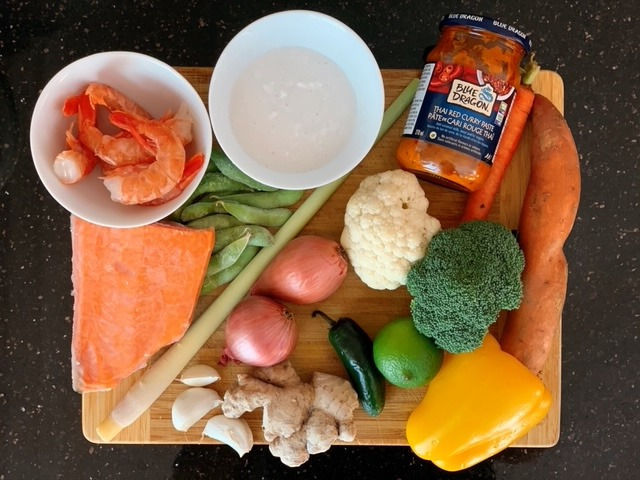Bone Broth
- Holistically Julie

- Jan 11, 2021
- 3 min read
Updated: Jan 25, 2021
I talk a lot about broths and stocks being the flavour foundations of great soups and many other dishes, but this particular broth takes the cake. The secret to a nutrient dense bone broth is the long cooking time and good bones. Bone Broth is nutrient-dense, collagen-rich liquid made from simmering animal bones. Using marrow-rich animal bones, and adding some aromatic vegetables, gives the broth it’s characteristic depth.
Bone broth can be enjoyed on its own, I like to season with just a little salt, or can be used to infuse flavour and nutrients into dishes (soup, grains, sauces, etc). When making bone broth I like to grab the biggest pot that I have and make a large batch of it. Because it has a cooking time of 24 -48 hours you don’t want to be putting all that energy in for a few cups. I also like to let my broth reduce by at least ⅓ to intensify the flavour. It freezes really well or can be kept in the fridge for 3-5 days (if it starts to smell sour, it's got to go).
Bone broth is known to give the immune system a boost, help fight the common cold, protect against inflammation, heal the digestive system, improve hydration and help to strengthen bones and teeth.
It’s important to invest in good bones - grass-fed, pasture raised beef bones, free- range chicken, or wild turkey. How an animal is treated, what they are fed and how well it lived, will all have an effect on it’s bones. I typically buy my bones from Goodness Me, they often have them on special and when they do I stock up my freezer. If you have a local butcher that you trust that could be another great place to purchase bones from.

INGREDIENTS
1 kg grass-fed beef bones
2 onions; quartered
2 large carrots, chopped
1 cup mushrooms - whatever you have on hand, I used dried shiitake
2 stalks celery, chopped
1 head garlic, cut in half.
1 tbsp whole black peppercorns
5 bay leaves
Fresh Herbs: Thyme, Rosemary, Parsley
METHOD
Preheat oven to 400F
Place Beef bones on a rimmed baking sheet and roast for about 25 minutes, or until deep golden in colour.
Transfer bones to a large stockpot and cover with 5 liters of filtered water.
Bring to a boil and then reduce to a simmer.
In the meantime transfer the vegetables to a baking tray (I like to use the same baking tray) roast in the oven for about 20 minutes or until the edges begin to brown.
(you can roast the vegetables and bones together is you have a large enough pan to fit it all)
Add the vegetables, bay leaves, peppercorns, herbs and garlic to the pot.
If you have any vegetable trimming saved in the fridge or freezer go ahead and add those in as well.
Continue to simmer for a minimum of 24 hours.
Remove from heat and allow to cool - you can either let it cool completely so that the fat solidifies at the top and its then easy to remove it. Or strain while warm into mason jars, the fat will still float to the top and solidify.

It’s funny to think how not too long ago it was very difficult to come across beef bones, the market wasn’t there and often, unless you requested the bones specifically from your butcher, they would just get tossed out. Before the bone broth craze happened I was at Whole Foods looking everywhere for soup bones - grass-fed beef bones, with the intent of making bone broth. I finally went and asked the bitcher behind the meat counter if they had any and that's when he let me know I could put in a special order for them and when they have them, they give you a call. I was shocked! As someone who grew up eating soup every Sunday and watching my grandmother make a less intense variation of bone broth, I couldn’t believe that a place like that wouldn’t have good quality bones to purchase. We are fortunate that Bone Broth has made its way to the spotlight, making good quality bones very accessible.









Comments